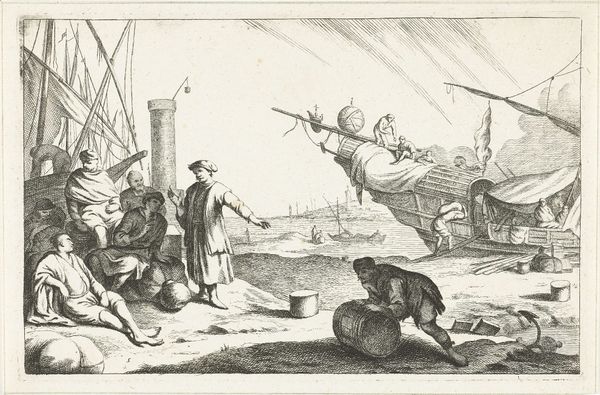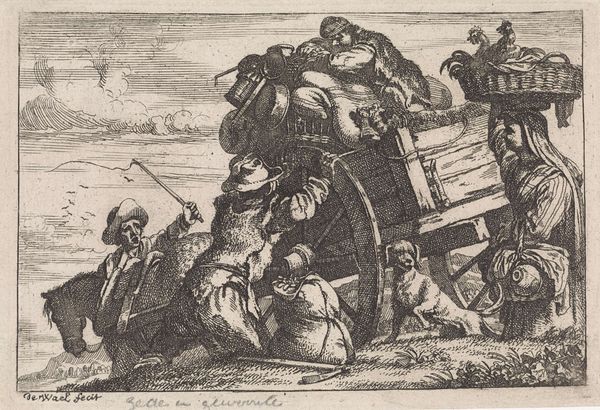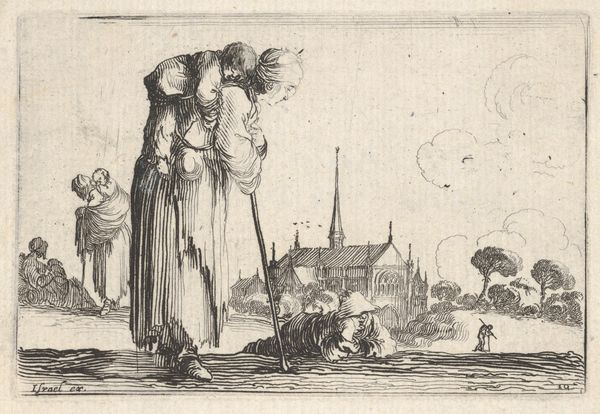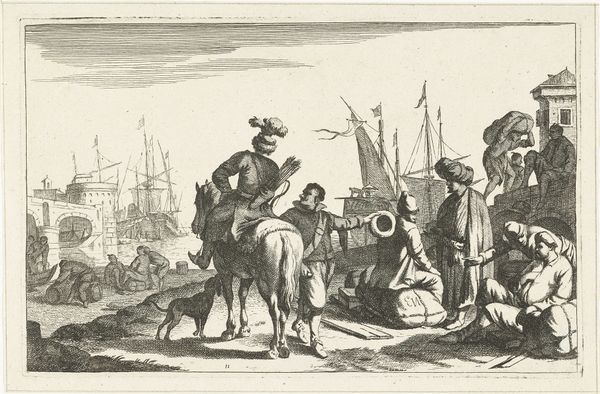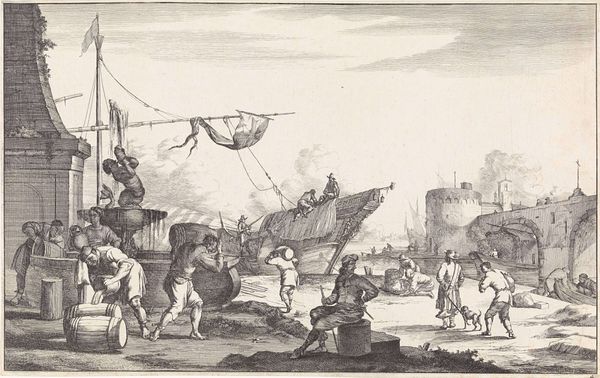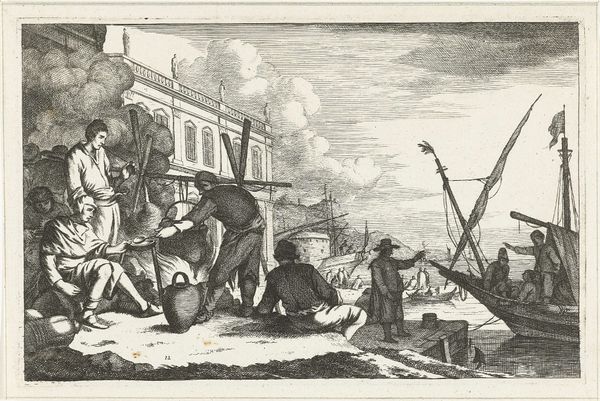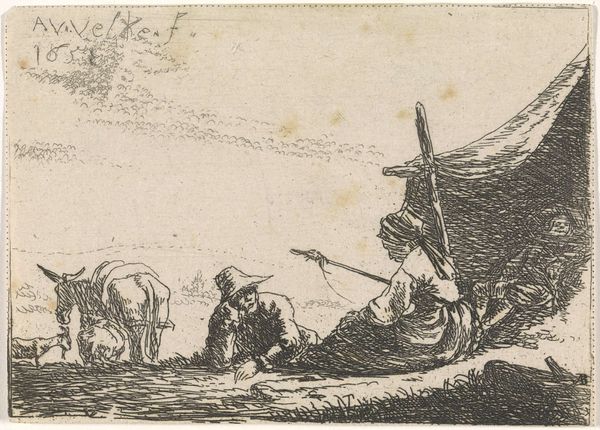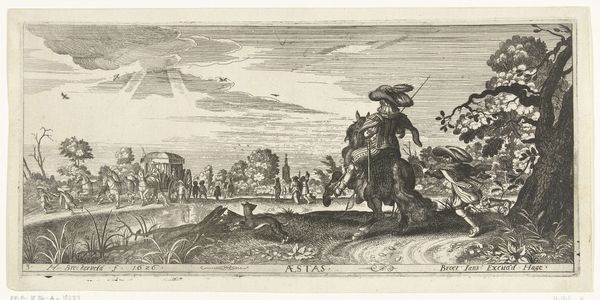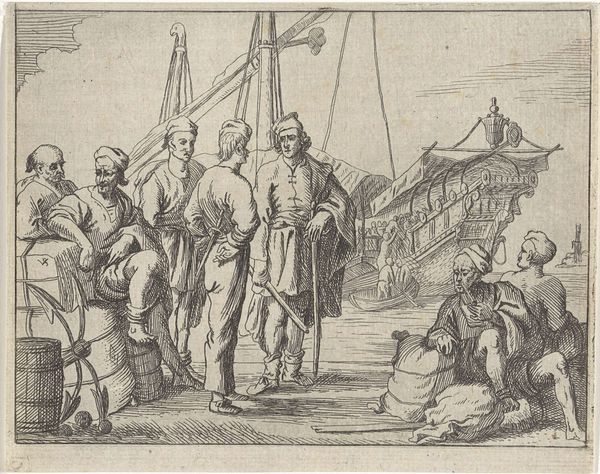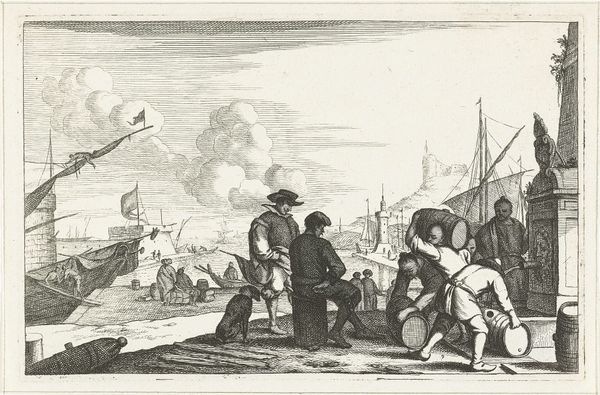
print, etching
#
narrative-art
#
baroque
# print
#
etching
#
landscape
#
orientalism
#
cityscape
#
genre-painting
Dimensions: height 155 mm, width 238 mm
Copyright: Rijks Museum: Open Domain
Curator: Allow me to introduce “Haven met kooplieden en pakezel,” or “Harbor with Merchants and Pack Animal,” an etching dating from 1679 to 1728 by Johannes Gronsveld. Editor: The immediate impression I get is of bustling commerce, captured with these incredibly fine lines and hatched shadows. It’s as though we’re witnessing a staged performance of labor. Curator: Indeed. The material reality is that this print, created through etching, was likely circulated widely. It speaks volumes about the Netherlands’ fascination with global trade at that time and the orientalist interpretations. Editor: Right. We're seeing this through the lens of the Dutch Republic and their colonial ambitions. How was Gronsveld involved in disseminating similar images? How did they inform perceptions of the 'exotic' other? Curator: It is not well recorded exactly how it was traded; what is available however is insight into the materials used to construct the piece itself. Etching involves coating a metal plate with wax, drawing a design through it, and then using acid to bite into the exposed metal. After which, many images can be made, an almost industrial manufacturing style for images in the era. Editor: The ships in the background, those sturdy barrels with the bold ‘MM’ inscription... even the weary expression of the pack animal laden with goods, it's all such detailed production. Did this reflect on society? Were such trade goods seen in homes often? How might the working class interpret the symbols presented by the artwork? Curator: Considering how it could be reproduced relatively easily via etching, it suggests the image itself was a commodity circulating in the social world, impacting values, beliefs and possibly trade practice itself. Editor: Fascinating! Seeing the port city so active really shows just how material realities shape the art of that period. Thanks, Curator. Curator: My pleasure. It's clear that the print really shows how materials and historical perspectives enhance our comprehension of society then and there.
Comments
No comments
Be the first to comment and join the conversation on the ultimate creative platform.
